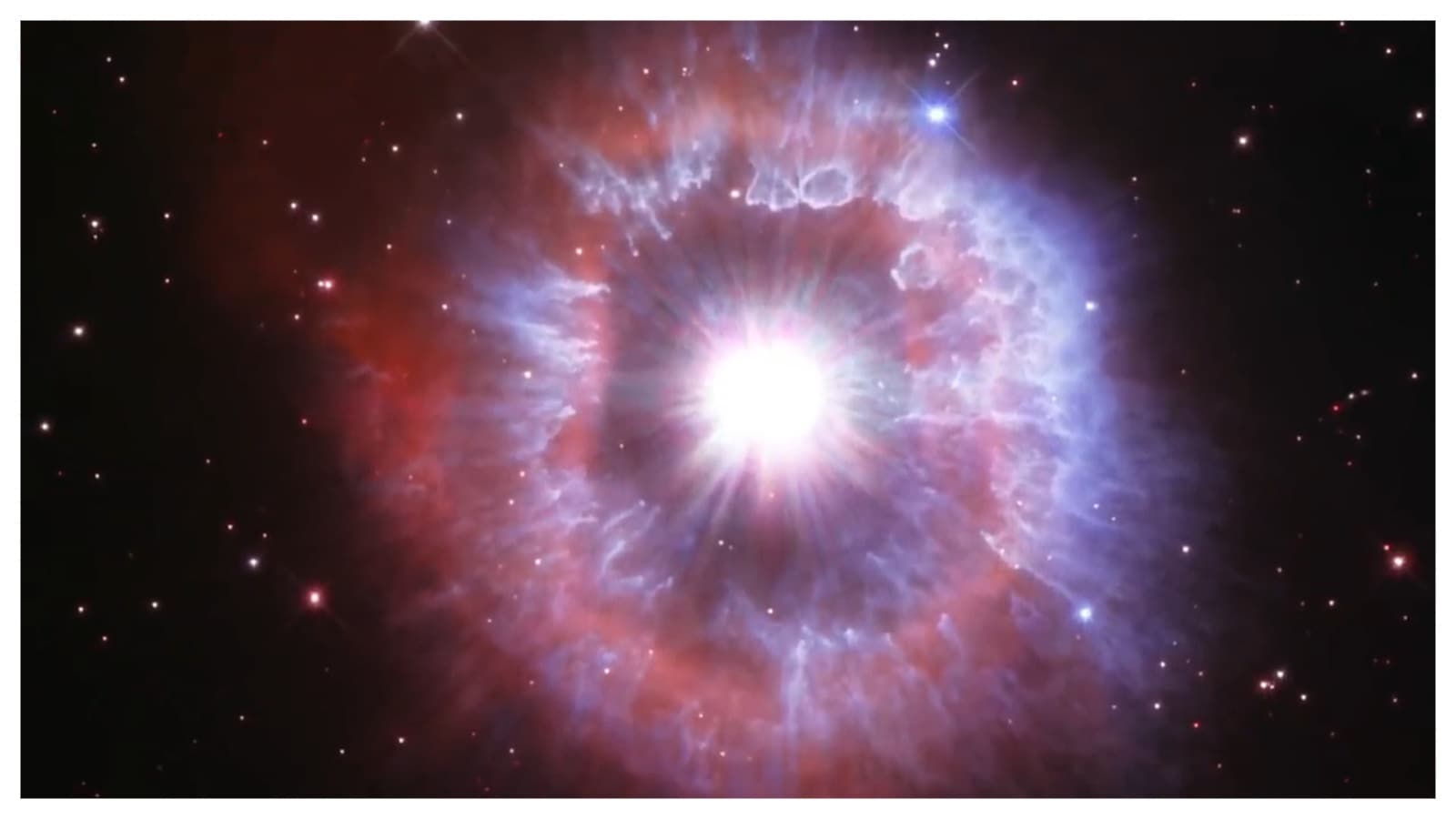‘Very massive stars’ or ‘very luminous stars’ may be emitting a significantly higher amount of material during their lifespan. A new study suggests that the immensity of these materials could be much higher than previously thought.
Very luminous stars are those stars that have over 100 times the mass of the Sun. Despite having a much higher mass than the Sun, they use their nuclear fuel at a much higher rate, making their average lifespan only a few million years, at times even exhausting their fuel in a few hundred thousand years.
For comparison, the Sun has existed for 4.5 billion years and is expected to live for another ten billion years. This indicates an almost fifteen billion-year lifespan, significantly longer than that of the very luminous stars.
Once their nuclear fuel is exhausted, very luminous stars collapse to form black holes. A team of scientists assembled to study these stars has estimated that very luminous stars produce stellar wind that is powerful enough to blow their own outer layer into space.
As per the scientists’ models, stellar systems consisting of two gravitationally bound stars (also known as stellar binaries) can merge to form one very luminous star. The team also attempted to research a link between strong stellar winds and black hole population.
Why are very luminous stars important?
These stars, despite their short lifespan, still influence the region around them. For instance, their powerful stellar winds can push newly formed elements into their surroundings. While most form new stars, elements key to life, such as carbon and oxygen, are also emitted.
In spite of their distance from our Earth, they still bear an influence on it. These stars can be considered the predecessor to black holes. This occasionally leads to black hole binaries, where two black holes orbit around each other. These cause gravitational waves, which we then detect on Earth.
Story continues below this ad
Studying very luminous stars
Previous studies used space- and ground-based telescopes to study these stars in the Tarantula Nebula of the Large Magellanic Cloud for the first time. Several stars at the centre of the Tarantula Nebula weighed over 200 times the mass of the Sun.
These stars were called “Wolf-Rayet stars” (or WNh stars) that were at the end of their hydrogen-burning phase; hence, the stars displayed leftover hydrogen on their surface. They had an estimated temperature of 40,000 to 50,000 degrees Celsius but, as per standard models, cooled down with age. Researchers subsequently ideated a “mass-loss recipe” to link the theory and observation.
 The Tarantula Nebula’s outskirts, captured by Hubble. (Image credit: ESA/Hubble & NASA, C. Murray)
The Tarantula Nebula’s outskirts, captured by Hubble. (Image credit: ESA/Hubble & NASA, C. Murray)
Researchers at the International School for Advanced Studies in Italy (also known as SISSA) subsequently used these studies to add to their stellar evolution code, PAdova and tRieste Stellar Evolution Code (shortened to PARSEC). They used this code to create a model for the Tarantula Nebula’s stars.
“The strong winds strip away the star’s outer layers, preventing it from cooling down, while maintaining the surface composition matching a WNh star. The star stays more compact and hot for longer, exactly reproducing what observations show,” researcher Kendall Shepherd was quoted as saying by space.com.
Story continues below this ad
Further use of the model
The model might have given a clue to another celestial mystery: the creation of R136a1. This 1.5-million-year-old star is the most massive star known by scientists, with a mass of up to 230 times that of the Sun and a luminosity over 4.6 million times that of the Sun.
 An artist’s representation of the relative size of R136a1 compared to other young stars. (Image credit: European Southern Observatory)
An artist’s representation of the relative size of R136a1 compared to other young stars. (Image credit: European Southern Observatory)
The new model is suggesting two methods of R136a1’s formation. It could either have been a ginormous star from birth or been the result of a colossal stellar merger (where two stars merge to form one larger star). While initially discounted, the model is now allowing for the idea of the stellar merger as a reasonable explanation for R136a1.
Impact on black holes
Due to the discovery of the extent of very luminous stars’ mass loss, it is discovered that they subsequently form smaller black holes after their death. These can be described as “intermediate-mass black holes”, around 100 to 10,000 times more massive than the sun, and are considered difficult to find in nature.
Another notable discovery of the research is a key insight into the formation of binary black holes. Contrary to current belief, stronger stellar winds are a crucial factor for systems to develop into black hole binaries. With weaker stellar winds, it was more probable for stars to merge before becoming black holes.
Story continues below this ad
With more violent stellar winds, stars would be blown further apart before their death, collapse, and subsequent black hole formation. These black holes could then slowly spiral and eventually merge to form a binary black hole.
Next steps
While this is notable research, it was only focused on the Large Magellanic Cloud’s environment. This environment has a unique chemical composition, meaning results cannot be generalisable to every system in the universe. Hence, the presumed next step will be observing and finding explanations for a selection of peculiar observed stars in other environments.
(This article has been curated by Purv Ashar, who is an intern with The Indian Express)




Average Rating